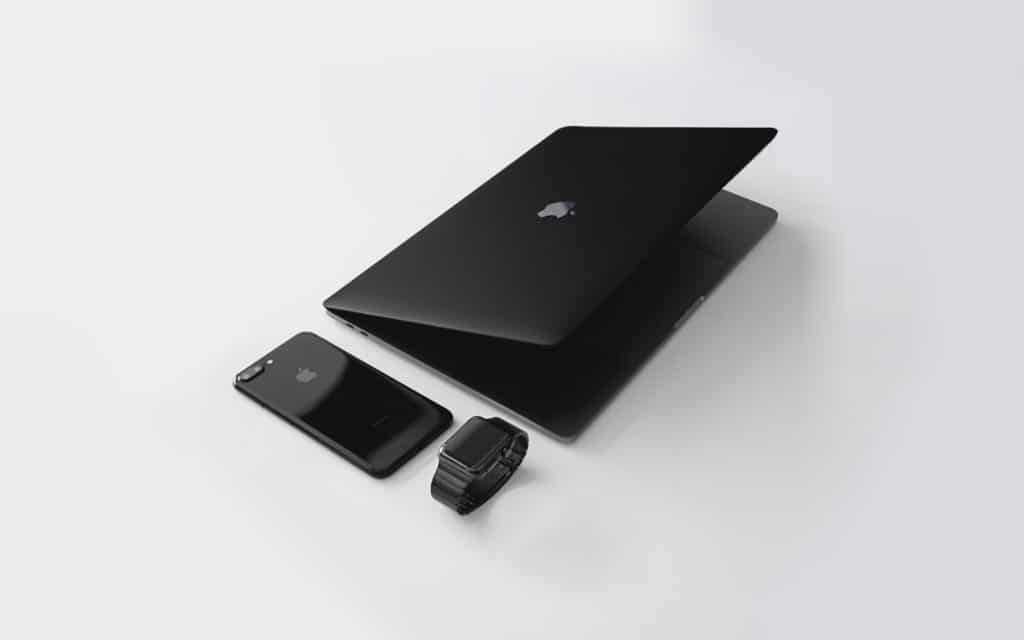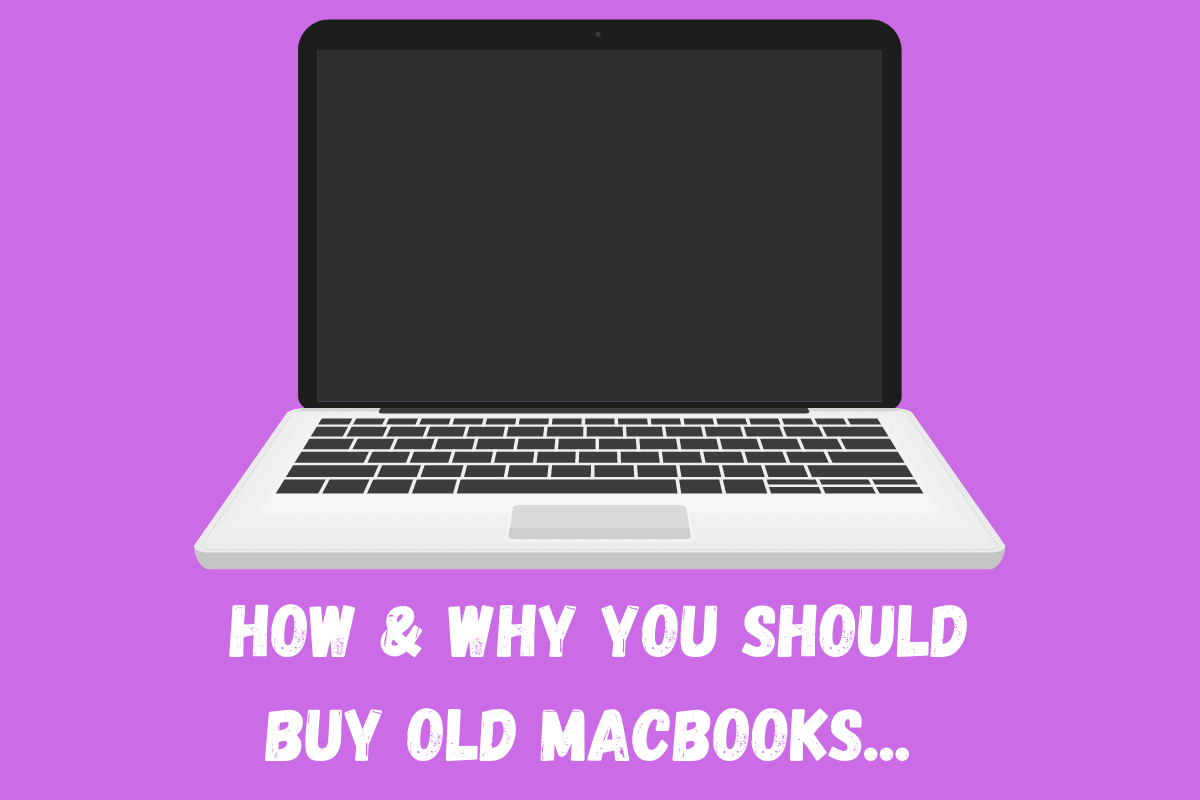Old MacBooks are cheaper than new ones – especially if you buy refurbished ones. But is it worthwhile? Or are you better off taking the hit for a new one?
Marketing is a cruel beast, especially when it is done as well as Apple’s. You see the new, shiny MacBooks. You read about the new ultra-powerful M1 chip and you want one.
Even if you cannot afford it.
RELATED: Check ALL The New Colors For Apple’s M1 iMac…
If you’re hellbent on getting a MacBook, and do not want to use a Windows or Chromebook, the only way to get yourself a “cheap” MacBook is to buy an old MacBook.
Are Old MacBooks Worth Buying?
And by “old” I mean a couple of years old; and you’ll also want to make sure you buy “refurbished” and not from some random from Craig’s List or Facebook Marketplace.
Why?
Consumer rights, put simply. If you buy something from a random on the internet, you have zero comeback if something is wrong with the product. With a company, you have things like warranties and a returns policy.

And if you’re going to be dropping north of $500 on something, this is the kind of protection you want in place.
Plus, a refurbished MacBook means it has been tested and serviced and will work as good as new.
You have to keep in mind that computers like Apple’s MacBooks are not like phones; they have a much longer lifecycle – and this goes doubly for Macs.
My iMac is now almost 8 years old, and it still works great.
I had to update the RAM, granted, but that only cost like $50 and it made the machine run as good as new.
With MacBooks, it is much the same deal and this means, if you’re on a tight budget, you can still get a Mac – you just have to buy a slightly older model.
How Much Do Older Macs Cost?
As always, it depends – it depends on the specs, the release year, the CPU it uses. But as a general rule of thumb: the newer the MacBook is the more it will cost upfront to buy.
Similarly, the higher the spec, the more it will cost: MacBook Pro models will ALWAYS cost more than MacBook Air models. My advice, decide on the model you want and then work out how much you want to spend.
Here’s a breakdown of how much you can expect to pay for an older, refurbished MacBook.
| MacBook Model | Release Year | Launch Price | Price Now |
|---|---|---|---|
| MacBook Pro 15″ | 2016 | $2799 | $1533 |
| MacBook 12″ | 2016 | $1299 | $658 |
| MacBook Pro 13″ | 2016 | $958 | $1799 |
| MacBook Pro 12″ | 2017 | $710 | $1299 |
| MacBook Pro 13″ | 2017 | $1053 | $1799 |
| MacBook Pro 15″ | 2017 | £2799 | $1598 |
| MacBook Pro 13″ | 2018 | $1799 | $1145 |
| MacBook Pro 15″ | 2018 | £3099 | $2034 |
Do Old MacBooks Still Perform?
If you’re concerned that your older MacBook won’t perform as well as a new model, this is perfectly reasonable.
A 2018 MacBook Pro is always going to lose ground to a 2020 model – that’s just the way things work.
Newer is better and faster and more powerful. But newer is also more expensive.
What do you want to do with your MacBook? Maybe you want to use it for work, college, or you just want it as a household computer?
Either way, it will run absolutely fine in these contexts – especially the Pro models.
For instance, if all you need a MacBook for is working, using cloud applications and software like Office 365 and some web browsing, any of Apple’s last several generations of MacBooks will be fine.
How Long Do MacBooks Last?
MacBooks, regardless of age, are specced-out for performance and longevity; this is the #1 reason why they cost more than Windows machines.
MacBooks and iMacs last longer than Windows-powered PCs – quite a bit longer.
Case in point: I have a three year old Huawei UltraBook that is basically dying and my MacBook Pro, now almost six years old, is running just as good as it did a couple of years ago, which is to say it runs great.
Back when I was at college, many moons ago now, I used Windows PCs and laptops. I ended up going through a couple every year or two. After getting annoyed by the constant updates from Microsoft and the issues, plus the fact they always seemed to break, I decided to switch to a MacBook.
I got my first MacBook in 2002 and I used that until 2010. Then I got a MacBook Air which I ran until 2014. Then I updated to a MacBook Pro and, later that year, bought an iMac once I started working from home.
The MacBook Pro and iMac are still going strong.
I’m not a normal user though; when the world isn’t locked down in some kind of Orwellian nightmare, I travel a lot. This means I need a laptop. And for work at home, a good desktop.
But most people will be fine with just one machine. And if that machine is a laptop, or a MacBook, then you’re looking at perhaps 7-8 years of near-perfect performance and usability.
Can you say that about ANY Windows laptop? I think not.
You can, of course, also run any MacBook as a desktop too – you just need to buy an external monitor, keyboard, and mouse. And probably one of these amazing things.
Downsides of Buying An Old MacBook?
The way I see it, put simply: there aren’t any. You’ll get a brilliant machine with excellent performance for a price you can manage.
This is the only way I ever buy MacBooks (and iMacs). I’d rather buy a refurbished one that is a couple of years old, buy it outright on a credit card or using my savings, instead of financing a couple of thousand dollars for a new one.
If the majority of the stuff you’ll be doing with your MacBook is cloud-based, meaning you do most of your “stuff” online, a MacBook that is a few years old will be perfectly fine from a performance perspective.

You won’t get Apple’s new M1 chip, however, but you will get full access to x86 applications if and when you need them.
And given how young Apple’s new M1 platform is, I don’t actually see this as a downside.
Bottomline? Even if you’re on a super-tight budget, there is a MacBook out there that you can probably afford – it’s just not a brand new one.
I get my refurbished MacBooks via Gazelle – you can check out all of its current options here.
As you’ll see, prices vary by model and the year the MacBook was released. The Pro models are most expensive, while the standard models are the cheapest.
My advice? If you want to use the MacBook for a good long while, get yourself a Pro model – they have better spec and will run better for longer.
You’ll pay more but over the long run they’re most cost efficient.
Remember: when you buy cheap, you buy twice (unless it is a refurbished MacBook Pro; then you’re just getting a sweet deal).
Also, check out Can I Hide The MacBook Notch? And have a look at Is Apple’s Polishing Cloth Worth It? And check out How To Turn Your Old Mac Into A Chromebook!


